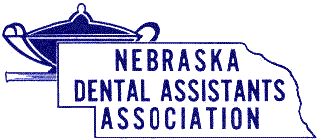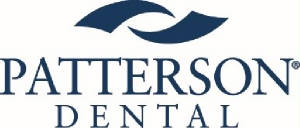|
|
Become a Licensed Dental Assistant!NDAA 2025 Annual Session ScheduleNDAA ANNUAL CONFERENCE RULES2025 NewsletterRespirator Practice UpdateJoining NDAANDAA Board Meetings Schedule2024-2025 NDAA OfficersLincoln Dental Assistants SocietyMid-State Dental Assistants SocietyOmaha Dental Assistants SocietyAward WinnersHistoryPhoto GalleryNDAA Forms/MOPNebraska Dental Assisting Accredited ProgramsInfection Control ResourceEmployment OpportunitiesContact Us
|
Nebraska ICAP (402)552-2881 https://icap.nebraskamed.com NebraskaICAP@nebraskamed.com
Respirator Use Update: Action is needed now to address safe and compliant respirator use in dental facilities
Recent updates have been made by the CDC and FDA regarding the use of respirators in healthcare settings. The following information affects the practice of dentistry and should be reviewed/ implemented as soon as possible to prevent potential employee health issues.
1. OSHA Requirements: https://www.osha.gov/coronavirus/control-prevention/dentistry
• Both OSHA and the CDC still recommend that the PPE used in any Aerosol Generating Procedure (AGP) in an area that has continued transmission of COVID-19 include a NIOSH certified, disposable N95 respirator • The use of respirators in dentistry requires (per OSHA) a respiratory protection to be implemented. The following are requirements of this written respiratory protection plan: Written respiratory protection plan (policies and procedures) Employee medical questionnaire and evaluation Employee medical questionnaire and evaluation Employee fit testing Employee training • More information on policy templates and resources can be found on the Nebraska ICAP/ Respiratory Protection Taskforce at: https://icap.nebraskamed.com/nebraska-respiratory-protection-task-force/
2. Defining an Aerosol Generating Procedure: The CDC Defines an AGP as: “Procedures that may generate aerosols (i.e., particles of respirable size, <10 μm). Aerosols can remain airborne for extended periods and can be inhaled. Development of a comprehensive list of aerosol generating procedures for dental healthcare settings has not been possible, due to limitations in available data on which procedures may generate potentially infectious aerosols and the challenges in determining their potential for infectivity. There is neither expert consensus, nor sufficient supporting data, to create a definitive and comprehensive list of aerosol generating procedures for dental healthcare settings. Commonly used dental equipment known to create aerosols and airborne contamination include ultrasonic scaler, high-speed dental handpiece, air/water syringe, air polishing, and air abrasion.” (https://www.cdc.gov/coronavirus/2019-ncov/hcp/dental-settings.html#definitions) Nebraska ICAP recommends that your facility come to a consensus on what you define as an AGP. Anything that includes the use of a dental handpiece, ultrasonic scaler, air/ water syringe, air polisher and air abrasion equipment. These could include, but are not limited to, any of the following procedures: • Restorative procedures that use a handpiece to remove decay (ex: fillings, crown and bridge) • Cosmetic procedures that use a handpiece (ex: veneers when tooth structure would need to be removed) • Implant placement • Crown and Bridge cementation if a handpiece is used • Surgical procedures that require the use of a handpiece • Endodontic procedures • Orthodontic attachment removal • Hygiene procedures that include the use of an ultrasonic scaler, air polisher or air abrasion equipment • Any procedure that utilizes the “spray” function of the air/ water syringe o The “spray” function aerosolizes materials that can remain in the air for an extended period of time o Using the water function by itself reduces the risk of aerosolization
3. FDA Respirator Use Update (5/27/21): https://www.fda.gov/medical-devices/letters-health-care-providers/update-fda-recommends-transition-use-non-niosh-approved-and-decontaminated-disposable-respirators “The U.S. Food and Drug Administration (FDA) is recommending health care personnel and facilities transition away from crisis capacity conservation strategies, such as using non-NIOSH-approved disposable respirators, including non-NIOSH-approved imported respirators such as KN95s. This recommendation is in follow-up to the April 9, 2021, letter in which the FDA recommended a transition away from decontamination or bioburden-reduction systems for cleaning and disinfecting disposable respirators, which were being reused by health care personnel. Based on the increased domestic supply of new respirators approved by the Centers for Disease Control and Prevention’s (CDC) National Institute for Occupational Safety and Health (NIOSH) and consistent with CDC’s updated recommendations, the FDA believes health care personnel and facilities can transition away from using non-NIOSH-approved respirators and from utilizing decontamination and bioburden reduction systems. These crisis capacity conservation strategies have been used to address respirator shortages during the COVID-19 outbreak.” FDA Recommendations: • Limit decontamination of disposable respirators. Decontaminated respirators and respirators that have undergone bioburden reduction should be used only when there are insufficient supplies of new filtering facepiece respirators (FFRs) or when any new respirators are unavailable. • Limit use of all non-NIOSH-approved respirators, including imported respirators, to only when there are insufficient supplies of new NIOSH-approved FFRs or when any new respirators are unavailable. • Transition away from a crisis capacity strategy for respirators, such as use of non-NIOSH approved respirators and decontamination of N95 and other FFRs. • Increase inventory of available NIOSH-approved respirators, including: N95s and other FFRs Elastomeric respirators, including new elastomeric respirators without an exhalation valve that can be used in the operating room Powered air-purifying respirators (PAPRs). • Even if health care personnel and facilities are unable to obtain the respirator model that they would prefer, the FDA recommends obtaining and using a new NIOSH-approved respirator before using a non-NIOSH-approved respirator or decontaminating or bioburden-reducing a preferred disposable respirator.
4. What you can do now: • Assign a respiratory protection champion in your office • Designate time for the champion to work with management and develop a written respiratory protection plan that meets the requirements according to the transmission rates of COVID-19 in your local area as listed in the OSHA PPE chart above • Remember that not every employee will need to wear a NIOSH approved respirator, only those that are directly involved in the AGPs at the facility • Review respirator inventory for non-NIOSH approved respirators (ex: Kn95s) and begin to cycle them out of rotation • Conduct a PPE Burn Rate assessment to determine the need of NIOSH approved N95 respirators • Work with your supply rep to determine the respirator models that are available and will be in steady supply • Determine the best way to have employees identified to wear respirators complete the medical evaluation and fit testing that is required for the OSHA respiratory protection program (ex: working with an occupational health clinic) • Discontinue the practice of storing and reusing the respirators in your practice for multiple days (discontinue extended use) • Limited reuse of respirators is still okay (using a single respirator for multiple patient encounters) but respirators should be disposed of and not reused once doffed • Begin working toward conventional PPE use of one respirator for one patient encounter as your supply normalizes • Visit the Respiratory Protection Taskforce Page for more information and resources about respiratory protection on the Nebraska ICAP website at: https://icap.nebraskamed.com/nebraska-respiratory-protection-task-force/ • Reach out to the Nebraska ICAP team with any questions you might have Enter content here Enter content here |



